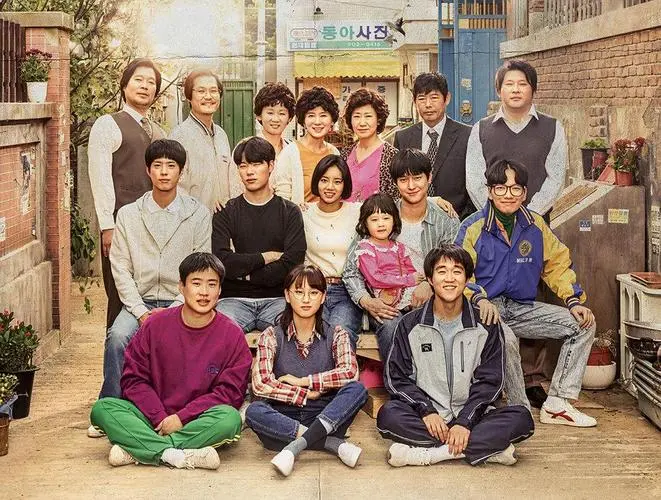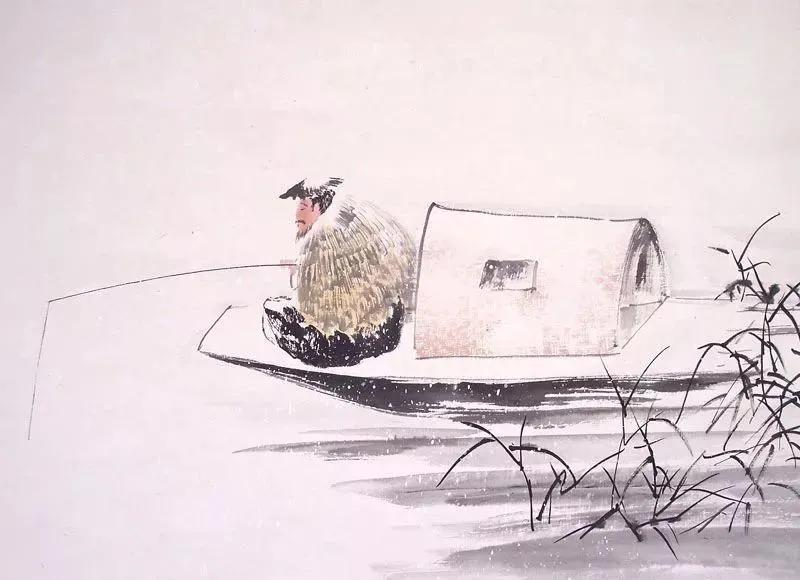
We have newly launched the Taobao Technology annual special issue " Learning is like sailing against the current, if you don't advance, you will retreat - Engineers' 2023 Growth Summary Special Topic ". The special topic contains more than 10 engineers' sincere journey and experience thinking in 2023, covering terminals, servers, technical quality, etc. In the technical field, this is their experience. You are welcome to communicate with colleagues. This article is the second in the series——
The first article: " Talk about my ten-year journey in test development"
Tianwei, a server development engineer,
published 6 articles on the Taobao technology account in 2023. He
talked
about technical information, business accumulation, and personal reflections. Now he will summarize the articles he published.

Total please answer 2023
Every winter, it's time to watch "Reply 1988"~ Indeed, "Reply 1988" is the TV series that moved me and resonated with me the most. Each chapter of it talks about a theme and expresses the simplest feelings. Emotion makes people feel warm~
In this winter, having the opportunity to make a summary of the year is indeed a very beautiful thing, just like encountering the "first snow". This year, I wrote a lot of articles on the intranet, and there are also a few that can be shared on the external Internet. I want to create a few chapters based on these shared articles, and "shoot" a "Reply 2023" to convey my The most simple thoughts and emotions~

The touching "Reply 1988"

Chapter 1 Created years ago: Experimenting with metaphors
Every year at the end of the year, I feel like I am returning home. I take a few extra days off so that I can go back to my hometown to rest early. Before the Spring Festival in early 2023, the team took turns to finish sharing the book "Implementing Domain-Driven Design", and I have always been quite interested in DDD (Domain-driven design, Domain-Driven Design), so I wanted to take advantage of the Spring Festival. At this time of the holiday, make a summary of understanding.
Under the circumstances at that time, it can be said that "the right time, the right place, and the right people" were all available (sufficient vacation time, fresh memories of reading the book, and some experience at work), but "everything was ready and all we needed was the east wind". I don’t know how to start, I don’t know where to start.
At the beginning, I wanted to write a record and understanding of the chapters based on the outline of the book, but I always felt that it was not interesting enough and not "exciting" enough. After thinking hard about a single point, I began to use the "metaphor" related search idea to find breakthrough points: first of all, things that impressed me deeply, such as cartoons I watched when I was a child, high-scoring movies during college, and learning experiences during my study period... ... Then combined with my feeling of learning DDD: hazy, abstract, divergent...
Suddenly, a picture popped out of my mind. It was the scene in the movie "Forrest Gump" where everyone is running with Forrest Gump: Forrest Gump started running non-stop. After a while, there were many followers behind him. Run, but when Forrest Gump stopped, everyone was left with a blank look on their faces.
This "link point" makes me particularly excited, because it is not only similar to the process of following and learning, but also more thought-provoking: even if you are not "following", even if you are making real efforts, in the process of following, if you lack your own thinking and judgment , often grow very slowly. A good verification point is, when the tide goes out and no one is leading the way, have you left assets behind? Do you have a way to learn and move forward independently?
Therefore, the article uses this point as an introduction, first describing the confusion phenomenon in the process of learning DDD, and then using the design principles as an index to talk about some personal cognition and thinking. The whole thing is coherent and resonates well.
The analogy between "following the trend" learning and movie plots

Chapter 2: Not as good as notes: looking for knowledge
"I have been thinking about it all day long, which is not as good as what I have learned in just a moment; I have been staggering and looking at it, which is not as good as climbing up to gain insights." Indeed, the improvement of strength is often based on the accumulation of experience. If you want to grow quickly, you can Through reading and other means, understand other people’s experiences and thoughts, shortening the cycle of understanding and growth.
This article has been a long time since the previous article "DDD Understanding", which also reflects the difficulty of learning, not only in the content of learning itself, but also in how to determine the content and direction: which book to read, Finding which point to conduct research is difficult and full of uncertainty.
This article focuses more on "deconstruction of the business level", which is related to non-technical aspects such as production operations and organizational structure. It is an important supplement to technical thinking. Behind the article, I would like to share a few points:
-
The first one is "curiosity" and "desire for knowledge": In work, there is often a technical aspect where everyone communicates and talks with each other, and there is a strong atmosphere, but things like "business structure", "production relations", " "Strategic Objectives" and other "upper-level" parts rarely have the opportunity to be discussed. This part is often linked to "good business sense". It is often said that it mainly relies on experience and insights, but I think the core may still be: Are you really interested in understanding and researching?
-
The second is the mentality of "applying what you learn": As mentioned in the previous chapter, in the process of writing DDD articles, I thought that "excerpts and understanding" were not "exciting" enough and lacked its own highlights, but this was a one-sided approach. Subjective judgment, still not aware of the "value point". In the face of structured system knowledge, learning it well, even if it does not express a new point of view, as long as the link is made well, is an exciting thing. For example, introducing this perspective at work can "resonate" with the people and things around you and form a better "synthetic force."
-
The third is "sensitivity" and "awareness": In my daily "link delivery work", I feel that there is not much overlap with "domain work in DDD", and it is a bit embarrassing like "imitation". On the technology accumulation side, there is an urgent need to find some suitable "top-level categories for thinking" to provide a guide for one's work. Based on this "feeling", two major guidelines were gradually established: "Business Deconstruction" at the business level and "Application Model" at the technical level, weakening "DDD", and now I no longer feel so confused. At work, we always feel "awkward". We need to stay sensitive, go deep, think and fine-tune, and we can find a "just right" feeling, and this is also a process of "advancing with the times" .

Chapter 3 From Driving: Judgment Model
The reasons for writing articles come not only from work, but also from life. "Thinking Power: How to Make Better Judgments" is one such example.
Because my home is far away, I have to catch the morning rush hour and drive a long way to the company every day. The choice of lanes at each intersection here is repeated over and over again, but it is rare that a day is very smooth and satisfying, and I can always find more. The best choice may be due to your own mistakes in judgment, or due to accidental events such as having a novice driver.
What is sad is that life is also like this, full of choices and judgments. Therefore, I want to generalize and explain my understanding of the judgment and choice issues in work and life, and then follow this model to reduce entanglement and repeated "waste of time".
After sorting it out, I think there are three key points in "choice and judgment":
-
The first is the foundation. The core element of judgment is to collect judgment information. Instead of "improving the thinking model", it is more straightforward to "find ways to supplement information".
-
The second one is the model. The core is still based on a quantitative formula of input and output, but it is hierarchical.
-
有显著因素的,可以基于经验判断,常常可以做到不假思索;
-
If there are many factors, you need to try the model, calculate the ROI of different options, and make trade-offs;
-
If there are complex factors, simulations, judgments based on experimental results, prototype verification, AB testing, etc. all reflect this idea.
-
The third is skills: it introduces some judgment strategies and how to use relevant resources (customer needs, other people's opinions, clear value points, etc.) to improve the selection and judgment answers, so that the quality of the answers can be improved.
What I have to say is that even though I wrote the article, the "annoyance" of driving still exists. Ultimately, patterns and techniques don’t work very well without complete information. But this does not mean that the research is meaningless, because it will make me consciously "pay more attention to whether there are new cars in front", "pay more attention to the driving situation in front when getting off the bridge", etc., after collecting certain information, You can also achieve "rational decision-making", admit your mistakes and no longer be obsessed with "what if...".
Thinking about the Judgment Process

Looking for cases: talking on paper
Last year, I wrote an article on my understanding of "23 Design Patterns" and "6 Major Design Principles". While I received some "praise" from everyone, there was also a voice that hit my heart: "Can you talk about the specific application in trading? ".
Indeed, we are often accustomed to "talking on paper" and speaking "succinctly", but when it comes to implementation, we need to solve many detailed problems related to scenarios, which are full of complexity and require a certain period of time. Personally, I don't like "empty talk", but unfortunately, the organization is so big, there are so many systems, and I haven't been involved in the construction that much. It feels like there is really nothing to talk about.
Taking a step back, you can read other people's code and try to understand it, but you have to admit that if you haven't done the actual requirements, many of them will not be seen or understood. Moreover, because I have only done forward trading before and have never participated in reverse trading, the entire trading perspective is also lacking, and I really dare not say anything "exactly".
However, a turning point came. On the one hand, I participated in some reverse requirements and began to understand the reverse system structure; on the other hand, more importantly, after reading the book "Enterprise Application Architecture Patterns", I felt very bland. , to truly feel it, you may not need to speak very well, it may be enough to express "80% of the current situation". Ever since, I gained confidence and took this step.
This process is actually about "seizing the opportunity". On the one hand, it is the supplement of one's own experience and the increase of completeness; on the other hand, it is the subjective judgment of whether one can speak well, which is the improvement of confidence and courage. But in this process, the accidental catalyst was that I saw some external input and through comparison, when I felt that I could write some highlights, I became less cautious and timid.
If you don't take this step, then it will always be "wait a little longer, it will be better"; if you take this step, then it will become continuous improvement and improvement. If you can "talk on paper" and the cost is not high, then why bother "talking on paper"?
Action: The flower blooms and needs to be broken.

My work: Winding paths lead to quiet places
My work: Winding paths lead to quiet places
-
-
Ren Xianqi said that he is very lucky to have many well-known works. What is the sentiment behind the work? I think it may be that I hope to be remembered by everyone and be mentioned often; or it may be that I hope to have a carrier that can continue to help and influence everyone. This is indeed a beautiful thing.
From personal experience, as a business developer, I have been evaluating business needs, then writing code, going online, operating and maintaining, and then after a period of time, I start to switch positions and start a new cycle. But in this long process, I have always seen people around me exploring "structure" in an endless stream. I have seen people learning, creating, and reconstructing. But when I look back at myself, it seems that there is a lack of explanation. .
This kind of idea was not obvious in the past few years, and I didn't think much about it. The focus was still on input. But as the years went by, I started to think about a question: When can I have a work? This work can be understood purely as wanting one and having one. But if I look deeply, I still hope to have a work that can give an explanation for my several years of hard work and serve as a gathering point to win everyone's recognition. Behind this is a difficult and lonely journey that makes people want to speak but cannot express it.
Fortunately, I found an independent logical space between "work" and "non-work". Through a prototype system, I exported my understanding of the system structure and wrote 4 articles (" "Thinking", "Architecture", "Prototype", "Practical Combat"). These articles make me very excited, because this "work" is a "subtraction" of the knowledge I understand. It is based on an ingenious theme and hung together concisely, but at the same time it is an "addition" of my knowledge. This is the starting point, transforming and linking to many knowledge and systems learned.
I think "winding paths lead to seclusion" is a very good word that can express the logic of the "work". First, the process is indeed very tortuous. It takes repeated and often contradictory thinking such as "seeing a mountain as a mountain, seeing a mountain as not a mountain, seeing a mountain as a mountain" before we can arrive at a relatively streamlined core theory; second, Although the starting point may be the hope of being seen, in the end it is indeed "opening to a quiet place", which is the repeated improvement of self-awareness. What really matters is "whether I can applaud", which is a profound and peaceful direction.
Listen to your inner voice

Summary: The wind will never stop
After watching "Reply 1988", I also took the initiative to read some follow-up stories. The essence is still reluctant to part with these beautiful contents.
Summary: The wind will never stop
After watching "Reply 1988", I also took the initiative to read some follow-up stories. The essence is still reluctant to part with these beautiful contents.
This article talks about stories and thoughts based on some articles published in 2023. Looking back, each article was actually quite difficult. It’s like going through the college entrance examination now. It’s hard to regain the “motivation” I had at that time. However, what I want to say is that this "persistence" will continue, because I care about the feelings of the "readers". Every article is treated as an in-depth dialogue with you. Although we cannot see each other, this is indeed me. Motivation to move forward~
Server-side technology | Technical quality | Data algorithm














